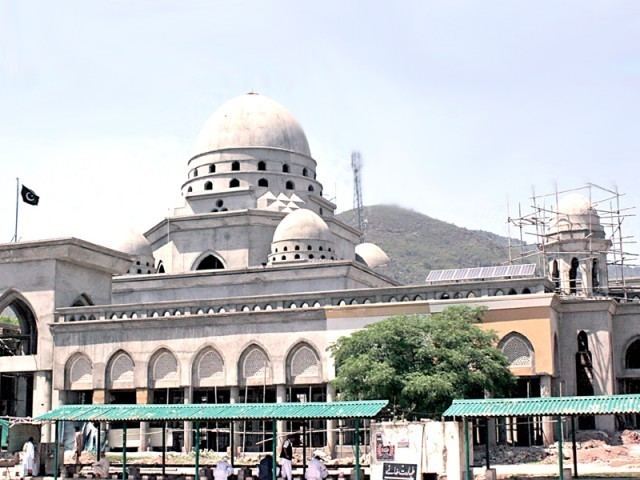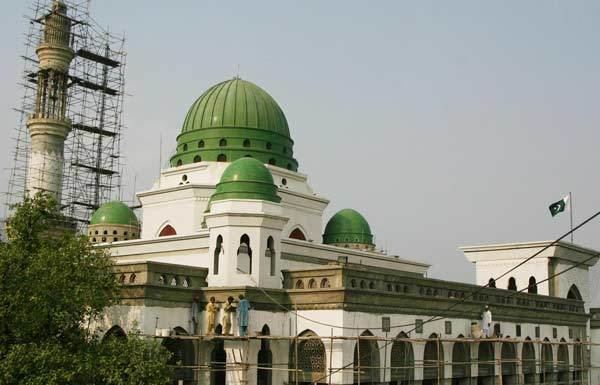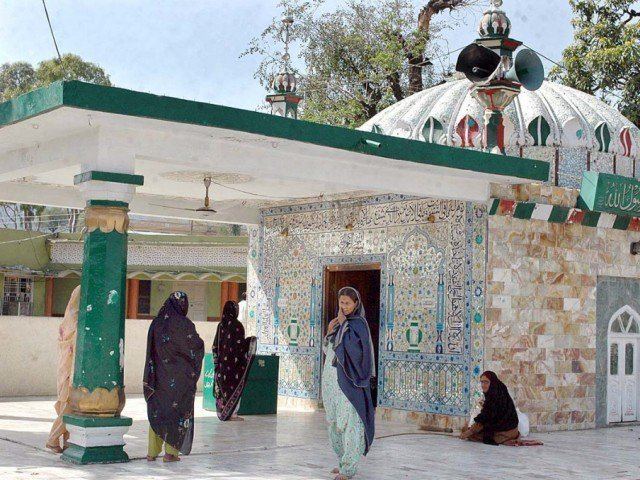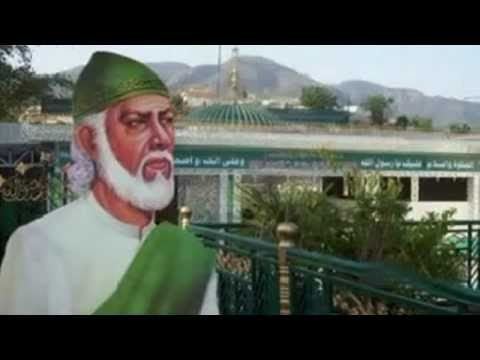Father Syed Mehmood Shah Name Bari Imam | Died 1705 | |
 | ||
Full Name Syed Abdul Latif Shah Kazmi Mashhadi Birthplace Choli Karsal, District Chakwal, Pakistan Place of Burial Noorpur Shahan, Islamabad, Pakistan | ||
Shrines of Bari imam (Loi Dandi) in Islamabad
Pīr Sayyid ʿAbd al-Laṭīf Shāh Qādirī Qalandarī, often referred to as Barī Imām or Barī Sarkār, or reverentially as Shaykh Shah ʿAbd al-Laṭīf by Sunni Muslims of the Indian subcontinent, was a 17th-century Sunni Muslim ascetic, mystic of Western Punjab who is venerated today as the patron saint of Islamabad, Pakistan. Born in Karsal in 1617 to a family descended from Muhammad, the life of Bari Imam is known "essentially through oral tradition and hagiographical booklets and celebrated in numerous songs" of Indian and Pakistani Sufism. In the present day, Bari Imam is the most popular and widely-venerated saint of Western Punjab.
Contents
- Shrines of Bari imam Loi Dandi in Islamabad
- Bari imam sarkar samaa special 11 aug 2016
- History
- The Shrine
- Terrorist Act
- References

Bari imam sarkar samaa special 11 aug 2016
History

Bari Imam was eight years old when his family migrated to what is now Aabpara, Islamabad in Pakistan. According to some sources, he later married and had one daughter, though both women are said to have died prematurely. After their passing, Bari Imam began wandering the forests of the Hazara district in Northern Punjab, where he spent twenty-four years as an ascetic. Although formally initiated into a branch of the Qadiriyya spiritual order begun by the 11th-century Hanbali jurist and mystic Abdul-Qadir Gilani (d. 1166), Bari Imam was primarily renowned as a great mystic in the Qalandariyya tradition of wandering dervishes, who were known for their frequent displays of spiritual ecstasy and their status as "holy fools for God." Despite, however, his often-enraptured nature, Bari Imam consistently upheld all the formal prescriptions of Islamic law, and never allowed his mysticism to "contravene" the law of God. As such, he adhered to the Hanafi school of orthodox Sunni jurisprudence in matters of the law.

As was often the case with the Qalandariyya dervishes, Bari Imam did not transmit any of his doctrines to writing; as such, it may be rightly presumed that he bequeathed all of his teachings orally. Bari Imam was renowned in his own life for being an ascetic who subjected himself to great self-humiliation in the public sphere, "living among the pariahs and consciously exposing himself to the disdain of the people." A celebrated miracle worker, Bari Imam is also described in regional lore as one through whom God performed many marvels to convince the local people of the truth of Islam; thus, some of the most popular miracles ascribed to him are his having caused water to gush forth from rocks and his having brought back to life the dead buffaloes of a peasant who had earlier provided the saint with milk during his ten years of spiritual seclusion.
The Shrine

The Mughal emperor Aurangzeb (r. 1658-1707) originally built the silver-mirrored shrine of Bari Imam. It has since been renovated many times, and is now maintained by the Government of Pakistan. Until the 1960s, the shrine was famous for its urs celebration, when the death anniversary of the saint was commemorated and which was attended by hundreds of thousands of people each year (in one particularly populous year, the attendance is said to have been 1.2 million people).
Terrorist Act

In May 2005, the village of Noorpur Shahan, Islamabad suffered a vicious terrorist act at the hands of Salafi jihadist terrorists that left 20 people dead and almost 70 injured.
